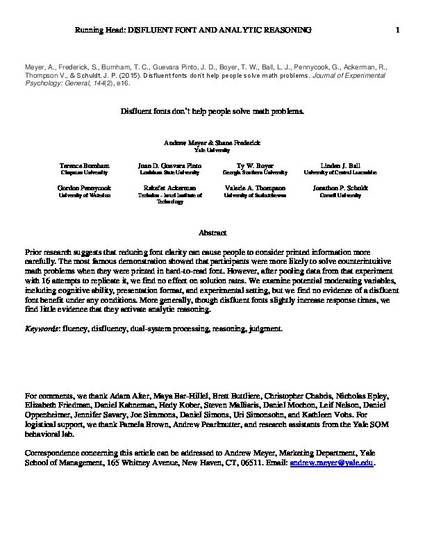
Article
Disfluent Fonts Don’t Help People Solve Math Problems
ESI Publications
Document Type
Article
Publication Date
1-1-2015
Disciplines
Abstract
Prior research suggests that reducing font clarity can cause people to consider printed information more carefully. The most famous demonstration showed that participants were more likely to solve counterintuitive math problems when they were printed in hard-to-read font. However, after pooling data from that experiment with 16 attempts to replicate it, we find no effect on solution rates. We examine potential moderating variables, including cognitive ability, presentation format, and experimental setting, but we find no evidence of a disfluent font benefit under any conditions. More generally, though disfluent fonts slightly increase response times, we find little evidence that they activate analytic reasoning.
Peer Reviewed
1
Copyright
American Psychological Association
Citation Information
Meyer, A., S. Frederick, et al. (2015). "Disfluent fonts don’t help people solve math problems," Journal of Experimental Psychology: General 144(2): e16. doi: 10.1037/xge0000049

This is a pre-copy-editing, author-produced PDF of an article accepted for publication in Journal of Experimental Psychology: General, volume 144, issue 2, in 2015 following peer review. This article may not exactly replicate the final version published in the APA journal. It is not the copy of record. The definitive publisher-authenticated version is available online at DOI: 10.1037/xge0000049.